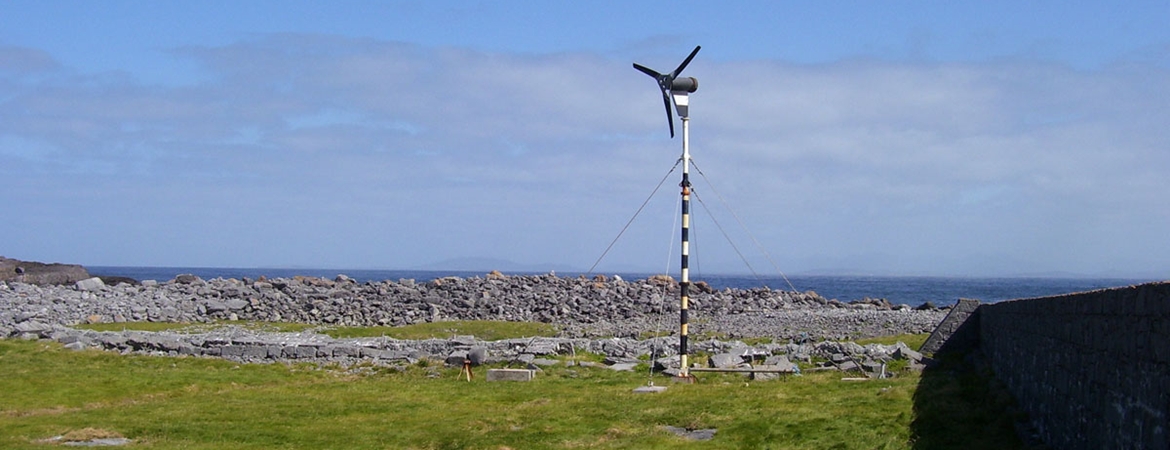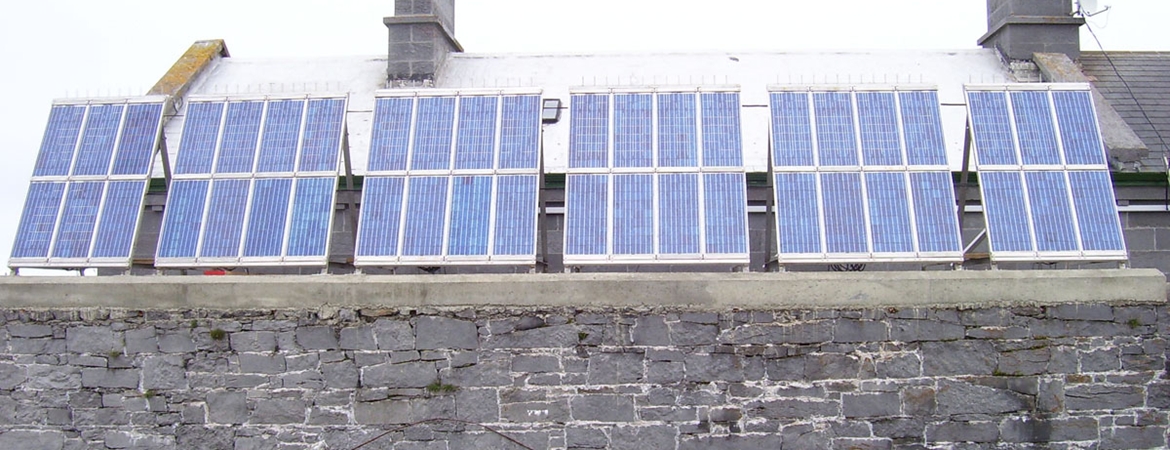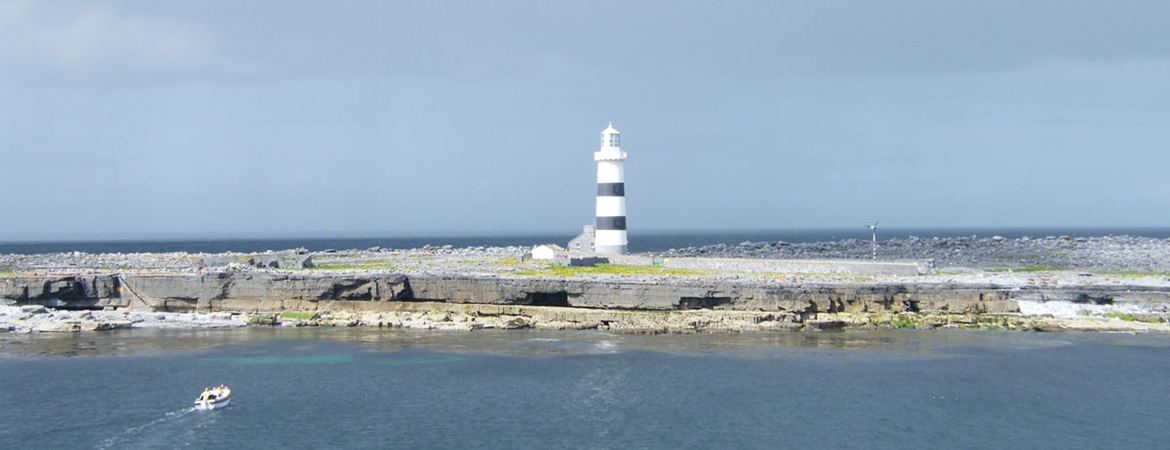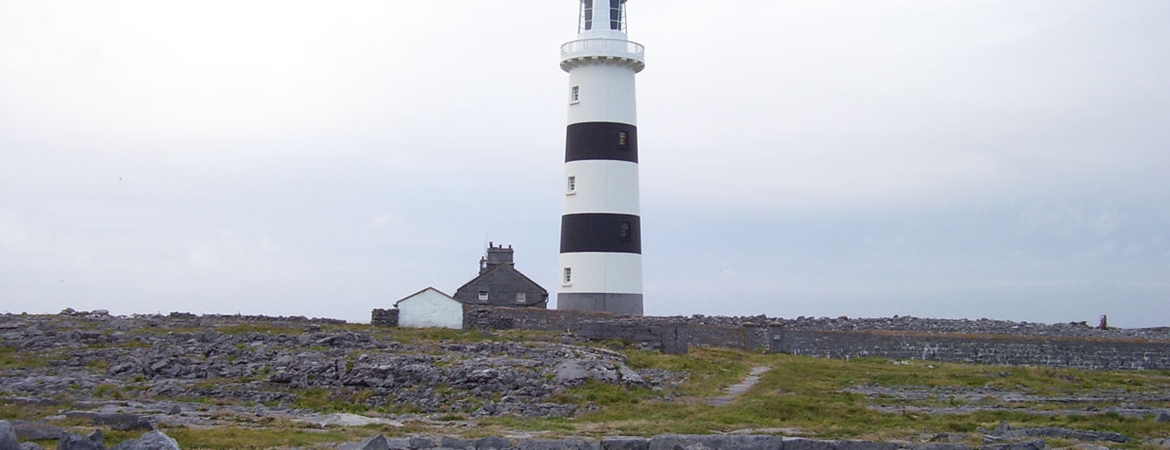Eeragh is a sea light on the Northernmost extremity of chain of Aran Islands. Originally a light was established on Inishmore near Dun Oghil at a height of 400 feet alongside the Signal Tower. The light was first lit on 1st May 1818 with a revolving optic giving it a flashing character so as not to be confused with either Loophead to the south or Clare Island to the north, both of which were fixed or non-flashing lights.
The optic had three faces with seven oil lamps and catoptic reflectors which when revolved gave a 30 second flash every three minutes. The Revenue Commissioners approached the Ballast Board two or three times over the following years without avail requesting that the Inishmore lighthouse be repositioned as it was too high and did not cover the entrance to the North or South Sounds. Eventually a request from the Galway Harbour Commissioners in 1850 for an additional lighthouse on Aran North or Eeragh received favourable attention. Inspector George Halpin reported that lights on extreme islands would have an important advantage. The Inspecting Committee agreed with Mr Halpin and ordered that a light on Eeragh was to be the same as Inishmore, and that Inisheer was to be a fixed light.
Trinity House gave their approval and said that if preference was to be given Inisheer should be constructed before Eeragh but if the Corporation decided to build both towers at the same time, Trinity House, would not withhold its sanction.
Land was acquired and by 1853 Inspector Halpin reported that both towers had reached the second floor level, and the dwellings were at the fourth course.
Chance Brothers of Birmingham supplied the fixed optic for Inisheer and Wilkins of London the flashing optic for Eeragh.
Due to weather conditions the exhibition of the lights was delayed from 1st November to the 1st December 1857, and on that date Inishmore light was discontinued. Inisheer's first order fixed white light had a red sector over the Finnis Rock.
Both towers and dwellings were built of the local very hard crystalline limestone. Subsequently the towers received distinguishing coloured bands. In 1932 the tower at Eeragh was changed from white with two red bands to white with two black bands.
The Navigational Light was considerably improved in 1904 with the installation of a new optic and a paraffin vapour burner. In 1958 the character was changed to Fl 15s with a flash duration of 1.2 seconds.
A generator set was installed at the Lighthouse in 1968 to provide domestic power for the keepers.
Boat reliefs, which despite the short crossing to Inishmore, were often delayed by rough seas, were replaced by helicopter reliefs originally operating from Clifden and now from Rossaveal.
Automation of Eeragh took place in June 1978. The duration of the flash was decreased in 1978 to 0.25 seconds and the range was increased to 23 nautical miles. The original optic was removed and replaced by an AGA revolving lamp array operated from batteries. The main battery was charged by a TMG (Thermo-Mechanical Generator), a device based on the Stirling Cycle engine. The standby battery was charged by running a Diesel Generator set for short intervals under automatic control.
The TMG was initially very successful in maintaining the charge to the optic battery. However, as time went on the degree of maintenance required to keep the TMG in operation proved excessive and it was finally decided to replace it with a wind generator, identical to the one at Straw Island.
The wind generator came into operation in March 1983 and charges the main optic battery. The standby battery continues to be charged by running the generator set.
On 27 November 2006 the light was replaced by a solar powered light with a reduced range of 18 nautical miles.
Eeragh Lighthouse is now in the care of an Attendant and is also monitored via a telemetry link from Irish Lights Dun Laoghaire.











